#tongan ngatu
Text
Miss Heilala #UrbanNesian
#tongan #tonga #ngatu #heilala #missheilala

32 notes
·
View notes
Text





I’m here ♥️
Thank you Netflix for celebrating our API (Asian Pacific Islander) community! Can’t wait to see more of our Polynesian people flourish into this industry.
This is a custom top made out of Tongan Ngatu. Traditionally this material is made from the bark of Hiapo or Mulberry Tree. Our ancestors passed this method down and mostly women hand make the Ngatu. It’s been a prized TREASURE (Koloa) of our ancestors and still is to this very day. It’s given at prestige’s events that celebrate milestones of life and the essence of our people. This necklace is a special piece we like to call, Heilala. Adorned with the significant color of Red representing my beautiful Tongan people.
This was an emotional appearance for me. Because for the first time in the many years I’ve been in this industry, I was able to represent and embrace my culture and family on these Hollywood floors. Feels liberating to be authentically yourself 🙏🏼
To my fans, I love you heavy! you’re in for one hell a f a ride x
13 notes
·
View notes
Note
Merry Christmas Kainga! How do you say Merry Christmas in your language? Also do you have any Christmas traditions?
"Merry Christmas from Tonga, Nonny!~"
"In Tongan we say 'Kilisimasi Fiefia' there's also a longer more formal one as well, 'Ofa ke mou ma'u ha Kilisimasi Fiefia mo ha Ta'u Fo'ou monū'ia' meaning; Wishing you all a Merry Christmas and a Blessed New Year!"
"As for traditions, our Holiday season starts on November 4th, which is Tonga Day and ends on January 1st to welcome in the New Year! Since it's summer and December here, it's the prime time for Whale watching as we're famous for out guided Whale and Dolphin tours and swims due to them loving our warm climate. Very popular with tourists and I always give them a visit each year."

"Those are just my silly little traditions however, on a boarder spectrum we have loads of Christmas traditions here. Any tree will work for Christmas decorating, we often use Olive and even Palm trees in households, mostly decorated with paper and flax chains. Gift giving is also a little different, traditionally the women prepare Tapa cloths or mats called Ngatu and give it to their brothers and then the brothers would prepare a Tokonaki or raw food like meats to give to their sisters. Unlike most Western cultures, we more so gift exchange than give, it gives everyone a fair opportunity to get something from their relatives."
"However, my all time favorite tradition is called Tutukupakanava. Our version of the usual Christmas lights, in where coconut husks are used and lined along the beach to be lit with fire. Tutukupakanava is celebrated between either large extended families or communities of people at a time, accompained by a feast of Tongan Christmas foods including Ufi, Roast Pig, Sweet Potato (kumala), taro and various kinds of seafood. Families light a torch and children play with sparklers around the bonfire. It's truly such a lovely tradition to attend each year with it's meaning so deeply rooted in our culture."

"If you're lucky nonny, you might catch a Siva Afi, a traditional Tongan fire dancer, preforming on a nearby beach often with crowds of locals and tourists alike. They give the most spectular and breath taking shows."

6 notes
·
View notes
Text
Tongan Design
Kupesi design tablets in Tonga are constructed by sewing coconut midribs onto a pandanus or coconut leaf sheath. This style of kupesi, which is still used today, is believed to have spread from Tonga to Fiji and Samoa, and beyond to other islands (tongabarkcloth.com).
The designs on Tongan ngatu are known for commemorating historical events in their motifs. Such memorable things in the life of Tongans as the introduction of bicycles, electric poles, and other historical events have been recorded in ngatu designs to document these occasions. Abstract and natural motifs are used. Ngatu ʻuli is black and used only for funerals, whereas ngatu tahina was lighter and used commonly.
Although ngatu is not worn as clothing anymore it is still highly valued. It continues to be a very important traditional koloa (treasure of women) and given as a gift item at ceremonies such as births, weddings, and funerals. It is given in amounts that make a statement about rank and social standing. This is an important facet of Tongan culture and has been recognized by scholars as part of the Tongan cultural system of gift exchange in a ceremonial economy.
2 notes
·
View notes
Text
4 Artist Examples
Tatiana Tavares:

Originally from Brazil and living in Aotearoa New Zealand, Dr. Tatiana Tavares has won numerous awards for her illustration and design across Australia, New Zealand, the UK and the US. From a fifteen-year career in advertising and graphic design, Tatiana received her MA (2011) and PhD (2019) in Art and Design from AUT – Auckland University of Technology, New Zealand. She is now a Senior Lecturer in Communication Design at AUT University, where she teaches at the undergraduate and postgraduate in the subjects of graphic design, illustration, narrative studies and contextual theory.
She is a practicing artist and a scholar that examines the intersection between decolonial storytelling and media language. Her artistic doctoral thesis is concerned with the potentials of polyvocality and interactive digital narrative. Her subjects involve practice-led research methodologies, Latin American syncretism in artistic and literary form, magical realism, and emergent technology. Her design practices cross graphic design, creative writing, illustration, prop making, film, sound design, AR technology and animation. Tatiana is a research associate for Cultural Spaces and Design in partnership with HyperWerk Institute – Basel, Switzerland. She has been recently appointed as a researcher collaborator in a number of research projects with the Te Arai research group (Palliative Care & End of Life Research) — School of Nursing (University of Auckland).
Marco Steagall:

Marcos Mortensen Steagall is an Associate Professor in the Communication Design department at the Auckland University of Technology - AUT, where he started in February 2016. He is the Communication Design Postgraduate Strand Leader and Programme Leader for Communication Design and Interaction Design for Year 3. He holds a Master's (2000) and PhD (2006) in Communication & Semiotics acquired from The Pontifical Catholic University of Sao Paulo, Brazil, and a PhD in Art & Design from Auckland University of Technology in 2019. My research interests are connected to visual semiotics; practice-oriented research methodologies in Art, Design and Technology; Lens-based image-making and indigenous epistemology. I Supervise both Master's and PhD students and have supervised both to completion.
Talita Toluta'u:

Talita Tolutau PhD thesis project Veitalatala: Matala ‘o e Talanoa is concerned with representation, considering the nature of a culturally located narrative form called Veitalatala and its creative translation into film and Ngatu prints. The designed outcome of this project considers the memories of Tongan women who left their homeland to settle abroad.
The work is a creative synthesis of those women’s talanoa, into a new form of documentary and Ngatu prints that is designed to capture the cultural and emotional resonance of their stories. Veitalatala: Matala ‘o e Talanoa orchestrates photography, animation, sound design, filmed footage, and extensive post-production research into a unique text that seeks to move the parameters of documentary beyond the visual interview. In doing so, the research draws heavily on Tongan paradigms of narrative and representation
David Sinfield:

Dr David Sinfield has been a Lecturer, Academic Leader and Creative Director in the Graphic Communications Design field for over 30+ years nationally and internationally. As a practicing Graphic Designer and Art Director David's practice is located in the field of designing and making printed artworks, moving image graphics, documentary film making and shorts such as the poem film. Structured around practice led research it considers artistic works such as Graphic Design, Communication Design, Typography, Photography, Documentary Film Making, AR & VR, Mobile Technology, New and Emerging Technology and Moving Image (film poetry, short film). His research underpins a series of poetic typographical projections such as the short films, film poem, documentary film making, typographical publications and typeface designs. It extends the concept of the portrait beyond a purely visual representation of identity by fusing typography, narrative, location imagery, sound and paralinguistics. In so doing, it demonstrates how certain concerns of graphic design might be employed to draw attention to the human condition. Furthermore it creatively expands on discourse surrounding typography as emotive by considering the erosion and decay of letterforms as generative of meaning. Further studies has led to the animated exploration in typography to capture the human condition, whether as film titles, or animated monologues, or as political commentaries on urban decay.
0 notes
Text
Missing part: WK04 all the rest of 4 artists
For more than 30 years, Dr. David Sinfield has worked as a lecturer, academic leader, and creative director in the field of graphic communications design, both in the UK and other countries.
Because David is a graphic designer and art director, he designs and makes printed works of art, moving image graphics, documentary films, and short films like the poem film.
This study is based on practice-led research, and it looks at artistic works like photography, graphic design, communication design, typography, AR/VR, mobile technology, new and emerging technology, and moving images (film poems and short films). Many of his poetic typographical projects, like short films, film poems, documentary films, typographical books, and typeface designs, are based on his research. It goes beyond the idea of a portrait as just a picture of a person by combining typography, narrative, location images, sound, and paralinguistics. By doing this, it shows how some aspects of graphic design can be used to bring attention to the human situation. In a creative way, it goes beyond the idea of typography as emotional by looking at how the wear and tear on letterforms can create new meaning. After doing more research, people are now exploring animated typography to show how people live, whether it's in the form of film titles, animated monologues, or political comments on the decline of cities.

Talita Tolutau
Talita Tolutau's project for her PhD thesis, Veitalatala: Matala 'o e Talanoa, is about representation. It looks at Veitalatala, a culturally situated form of storytelling, and how it has been creatively translated into film and Ngatu prints. The project's goal is to look at the stories of Tongan women who left their home country to live in other countries.
The piece is a creative combination of those women's talanoa into a new type of documentary and Ngatu prints that are meant to show how their stories have cultural and emotional meaning for people. Matala 'o e Talanoa combines photography, animation, sound design, filmed footage, and a lot of study done after the fact to create a one-of-a-kind text that tries to expand the definition of documentary beyond the visual interview. To do this, the study uses Tongan ways of telling stories and showing things a lot.
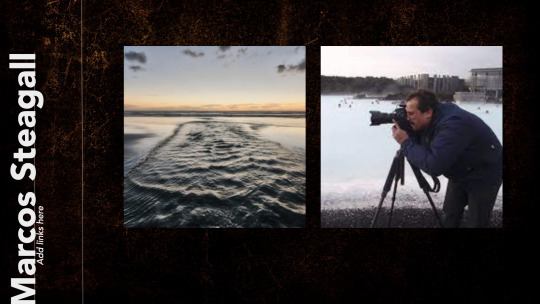
Associate Professor Marcos Mortensen Steagall works in the Communication Design department at the Auckland University of Technology (AUT). He has been there since February 2016 and is an associate professor. In Year 3, he is in charge of communication design and interaction design as the programme leader for communication design and interaction sign. He got his Master's and PhD in Communication and Semiotics from the Pontifical Catholic University of Sao Paulo, Brazil, in 2000 and 2006, respectively. In 2019, he will get his PhD in art and design from Auckland University of Technology. I'm interested in visual semiotics, practice-oriented research methods in art, design, and technology, making images with lenses, and indigenous ways of knowing. I've seen both Master's and PhD students through to the finish as a supervisor.
0 notes
Text
Type Specimen Book - Rationale
Making and Media has broadened my understanding around typography and design, helping me to think deeper and more critically when making design choices for this type specimen book. Through making this type specimen I have been able to use the tools and strategies I have been learning in real time.
Pepeha was a big part of this paper which I found surprising but made sense when the assignment was explained. The purpose of Pepeha is to make connections with others and see what similarities you have, so using Pepeha I made connections to the typeface that I have displayed in this type specimen. I chose to find a typeface that I thought connected to the art from Ngatu (tapa) which is a taonga from my Tongan culture. It is the way we share stories and remember moments by hand drawing motifs that represent this on large tapa cloths. I found these motifs and the style of drawing very similar to the and the overall visual look of Copal Std and patterns found in the 'Decorated' style.
One of the big learnings I had was the importance of typographic Hierarchy and the different elements I can use to achieve this successfully. Using things like contrast, spacing, rhythm, drop caps, scaling, captions were ways I could make content easily readable but still interesting enough for the reader to be engaged. Since I chose a poster typeface, I couldn't use that for my body text and captions as I don't think it would have good readability and would not have any interesting hierarchy. I had to choose a secondary font that would pair well with Copal but also a effective typeface for body text. I experimented with a few different typefaces, some serif and some san serif, but finally landed on using American Typewriter as it is very readable being a serif font but still has a similar feel to Copal.
Some challenges that I faced were finding the right typeface that connected to my Pepeha and keeping up with my tumblr blog. I do feel if I had been more active with my blog it would have helped me retain information and also work through my ideas faster. This is something I will definitely be working on for the second half of the semester. Overall, I have enjoyed what I have been learning in Making and Media and look forward to learning more over the next 6 weeks.
0 notes
Text
KNOW YOUR MATS
https://www.youtube.com/watch?v=GoPWy1sWMxU
My transcript:
(Narrator) : There are many different ways of marking important occasions in the pacific; the Tongans present their crops and Ngatu, the Fijians with their tempua and Kava; and Samoa is the motherland of Mats.
There are lots of different types; to sleep on; to sit on; for important guests to sit on; but the queen of all the mat kingdom- is the ‘ie Samoa. (*The fine mat)
Formerly known as ie toga, ie Samoa is one of our most valued forms of currency.
These treasured mats are created for special people and occasions and carry with them values of Fa’a Samoa and the history of families and communities behind them.,
(Woman speaking) : Fine mat is the top mat of all the mats. And because it is the main mats that the woman weave for our culture obligations.
(Narrator) : The knowledge of how to make these national treasures was only recently revived within the last 15 years [approx. 30 years since publishing this video] But a women in a business group who set up workshops for women to relearn the ancient art and weave the finest of ie Sina again. Replacing the bigger weaves of the bigger mats that have been popularised.
(Woman speaking) *reffering to the larger mats* “those are the fake ones. Those are not really fine mats. It really makes us sad to see that our culture is moving away... they think big things are good things. They do not see the value in it. There are more andf more young girls wanting to learn... we encourage them this is the future of our weaving programme and our fine mat project.
(Narrator) : Making an ie as a labour of love and of patience. It takes a skilled weaver months to achieve. ... (With Woman) - begin to describe the making process...
0 notes
Photo

Even the #cars #trucks #bicycles are not spare from #mmt #matemaatonga #decoration or #painted #red #rlwc2017🏆 @tonganrl #ngatu #tapa #tongacollege #tongan #rugbyleague #rugbyleagueworldcup
#tongan#rlwc2017🏆#ngatu#cars#tapa#trucks#mmt#matemaatonga#decoration#tongacollege#bicycles#painted#rugbyleagueworldcup#red#rugbyleague
1 note
·
View note
Text
Making and Print Process(es) Moodboard (1x board)

Nothing is mass-produced; everything is made by hand from local materials. Local women produce and sell bark cloth (tapa), woven mats, woven bags, baskets, mats (ta'ovala), waist girdles (kiekie), and other items. Men's crafts have traditionally included wooden carvings of war clubs and spears, as well as food bowls, but they now include carved pendants for jewelry and ornaments portraying warriors or whales.
The tapa cloth, created from the beaten bark of a mulberry tree, is one of the most important Tongan handicrafts. Women's groups collaborate to manufacture large pieces of tapa to give as gifts at weddings and funerals.
Natural materials are used to create things that are manufactured with great care and attention to detail. They mostly employ traditional Tongan materials like fine mats and tapa fabric, which is made from the dried, soaked, and pounded bark of the paper mulberry tree.
A successful village, according to an old Tongan proverb, lives together, works together, and assists one another. This is especially true with Tongan handicrafts, which are an important element of the culture.
Reference Links:
Book Arts in Tonga part 2: Learning Tongan Design and Making Books | Lili's Bookbinding Blog (wordpress.com)
Case-study-02_2014-Talita-Tolutau2.pdf (aut.ac.nz)
Ngatu, Cultural Wealth of the Kingdom of Tonga — Google Arts & Culture
Barkcloth in Tonga, 1773-1900: presenting the past in the present on JSTOR
'Ngatu, Barkcloth in the Kingdom of Tonga' - YouTube (Making Process of Ngatu)
Ngatu Tonga - YouTube Explanation
Tongan Arts and Crafts: Tapa Cloth Making - YouTube
Tapa cloth(1) Variety and History of tapa - YouTube (History)
2 notes
·
View notes
Photo










Concepts done during semester: Taking the advice given to me from feedback, I decided to formalise my concept which is a monthly homework group for pacific designers. I quickly came up with the name “Pacific Grid”, as it’s design focused, so grids, but also how Tapa/Ngatu patterns are derived from modular patterns that form grids.
I’d watched a talk from David Rudnick where he said something along the lines of taking peoples associations with a logo, or an image, and repurposing that feeling for something else. So I played around with the Digicel logo and that lead into the next idea. Taking existing pacific expressions of graphic design that you’d see on facebook for instance, and using this as a design system. Like maybe I could maybe I could have a contrast between “bad” design where it’s bad design but it’s put in 3d space. So, I spent a few days in blender, made some flowers and a donut render, then decided it wasn’t time effective. Also, “bad” good design is just hard to make.
I also explored the use of the grid. By combining, mirroring and distorting letter forms, you can create grids to create new forms. In my case, I was specifically looking at the 45 degree angle as it pertains to Pacific art and design. Visually, I was/ am struggling to come up with Visual assets. I’ve designed a typeface based on the 45 degree, but haven’t come up with a composition or system that I’m happy with yet.
Moving forward, I’ve changed the name of the homework club, from “Pacific grid” to “Katanga ‘e tau fohe”. Based on the Tongan proverb of people coming together from different angles to work towards the future. I think this can be shortened to TTF or TETF as a wordmark.
Another issue I haven’t resolved during this time is the tone. I’m constantly thinking about the appeal to Gen Z, but I don’t think that necessarily translates into using colloquialisms in my copy. But I don’t want to be over intellectualising something that doesn’t need to be. Ultimately, I think the kids just want stuff they can be proudly be into.
David Rudnick. Lecture "Crisis of Graphic Practices: Challenges of the Next Decades"
https://www.youtube.com/watch?v=-ejp4AvetSA
Period7
https://www.instagram.com/period7even/
5 notes
·
View notes
Text
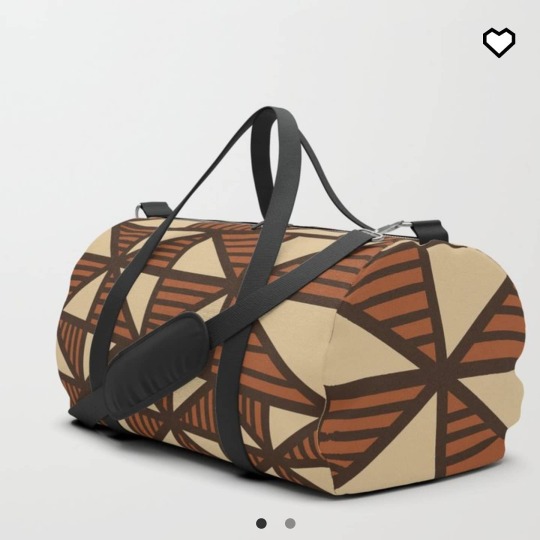

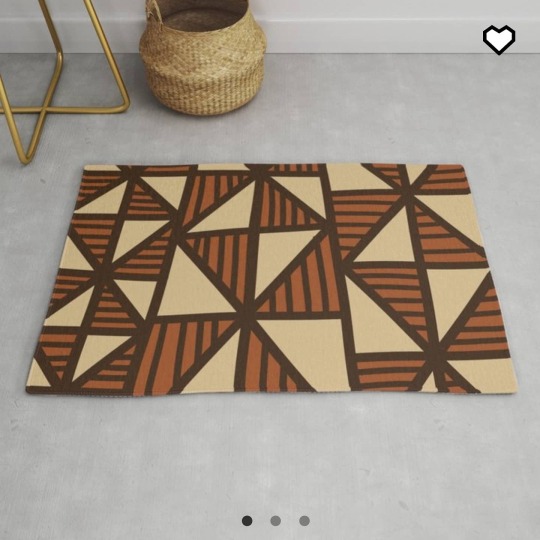
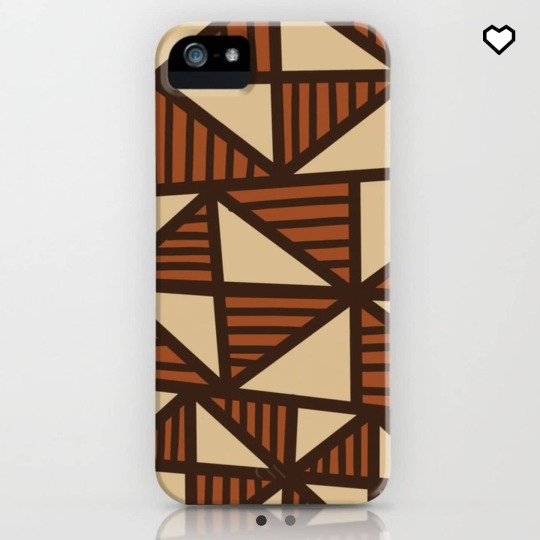
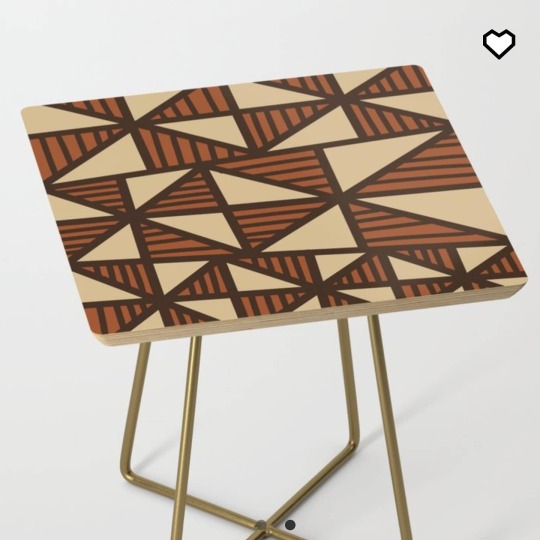
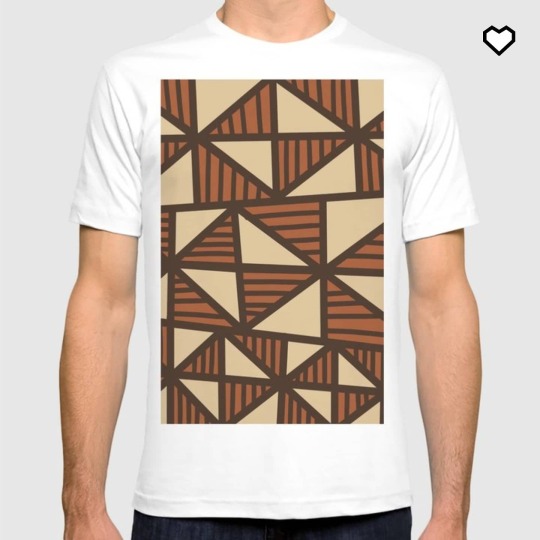
UrbanNesian Tongan Manulua design available on various goodies at ShopUrbanNesian.com
#UrbanNesian #manulua #tongan #tonga #ngatu #kapesi #tonganngatu #tongankapesi #tonganmanulua #tongandecor #tongandesign #tonganprint #tonganpattern
#urbannesian#polynesian#manulua#tongan#tonga#tongan design#ngatu#art#poly#tongan print#tongan art#tongan artwork#tongan manulua#tongan ngatu#urban nesian
16 notes
·
View notes
Photo


Artefact: Ngatu
Ngatu is the Tongan name given to tapa cloth or decorated bark cloth. It is made from the inner bark of Hiapo (paper mulberry tree). The pieces of bark are beaten with a mallet, widened and joined together to make larger pieces of cloth. Groups of women work together to decorate the cloth with natural dyes and pigments. I think this is a good design because it is culturally important with many aspects. For example, in the Tongan culture it is used for gifts, clothing, and decoration. It is also aesthetically meaningful with the beautiful patterns and designs that the Tongan women have put time and effort into.
Reference:
Bloomfield, M. (2009). Ngatu, Cultural Wealth of The Kingdom of Tonga. Google Arts & Culture. https://artsandculture.google.com/exhibit/ngatu-cultural-wealth-of-the-kingdom-of-tonga-ichcap/NAKi_qPipunBKA?hl=en
Bowers Museum. (2018, November 29). Fibers of History: Tongan Tapa Cloths. https://www.bowers.org/index.php/collection/collection-blog/threads-of-history-the-production-and-cultural-significance-of-tongan-tapa-cloths
Marcellin College. (n.d.). Tapa, A Tongan Treasure. Living Heritage, Tikanga Tuku Iho. http://www.livingheritage.org.nz/schools/secondary/marcellin/tonga/stories/storyReader$41.html
Museum of New Zealand, Te Papa Tongarewa. (n.d.). Tongan ngatu - marking moments in time. https://collections.tepapa.govt.nz/topic/2295
3 notes
·
View notes
Text
Ngatu from Tonga
file:///Users/sisipanikoula/Downloads/v41_engweb-4%20(1).pdf
Looking into my Tongan Culture a big part of it is Tapa cloths in translation to Ngatu. This is an indigenous art practice in the Pacific Islands however Ngatu aka Tapa Making holds great value and purpose among my culture. The significance of the Ngatu is part of the component of a ‘Tongan Womens Koloa which means Treasured Possession. It is necessary for ceremonial gift exchanges in celebrations and life events such as birth, weddings, funerals etc. Ngatu is viewed upon as cultural wealth.
To be able to incorporate the Ngatu as a way to symbolise the imparting knowledge from one generation to another in a gift form builds the value and purpose I want for my artefact. I want to not only preserve this knowledge but also weave it into my project.


0 notes
Photo

[1] Vaimaila Urale, Aniva, 2019. Black card and sand. Courtesy of Sanderson Contemporary, Auckland, Aotearoa/NZ. [2] Mixed design Tongan kupesi, prior to 1930s. Courtesy the Lady Dowager Fielakepa. [3] Ngatu with spitfire plane motifs, c. 1940s. Photo: Eddie Lam, 2019. [4] Tanya Edwards, Queen Salōte, 2018. Digital print. Courtesy of the artist. [5] Nikau Hindin, Te Tīpare o Hinetakurua, The Crown of the Winter Goddess. (Winter Solstice, 21.06.2020), 2019 (detail). Kōkōwai (red ochre), ngārahu (soot pigment) on aute (paper mulberry). Courtesy of the artist.
2 notes
·
View notes
Photo

kupesi template for making Tongan ngatu by Tanya Edwards
18 notes
·
View notes